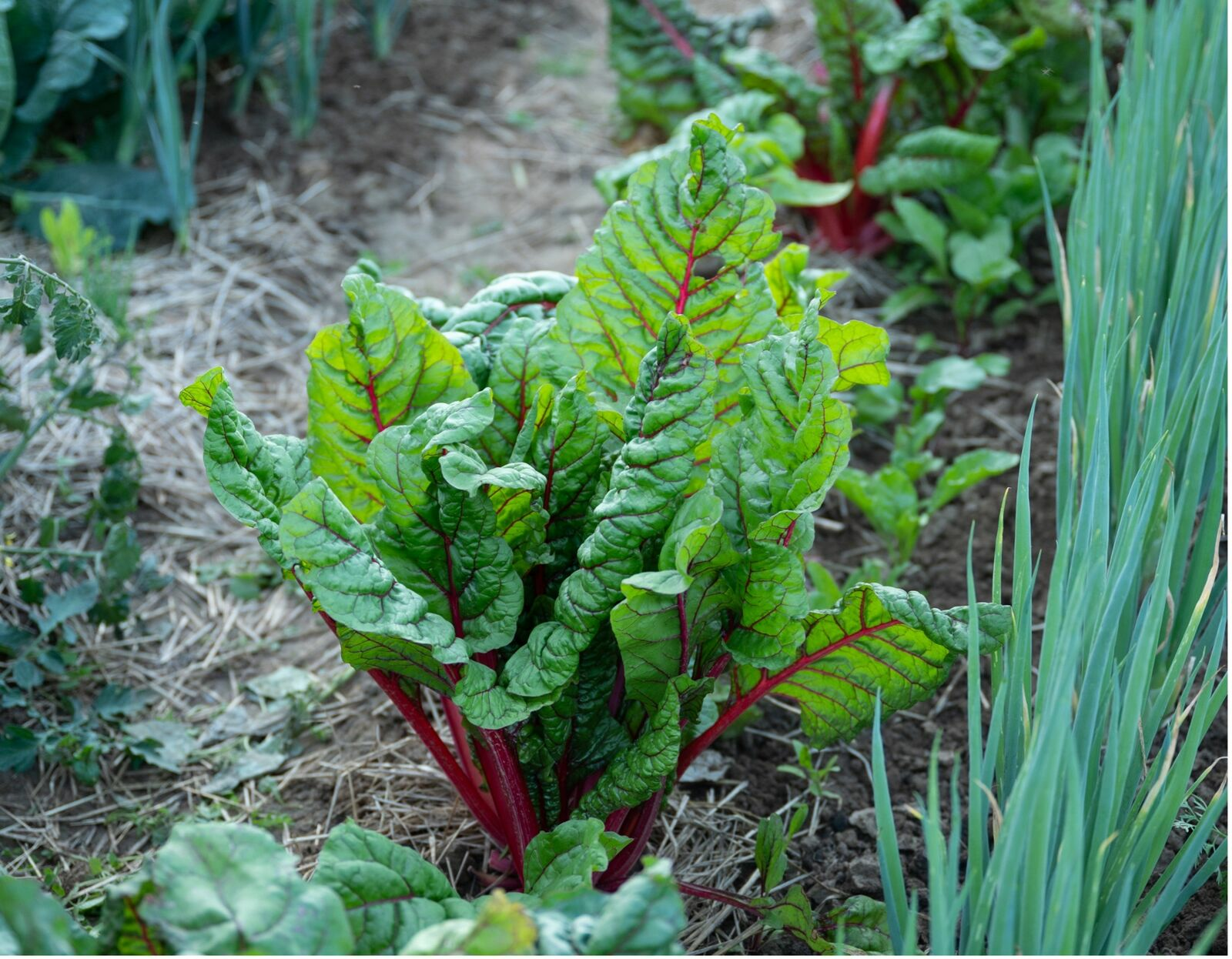
Companion Plants for Swiss Chard: What (Not) to Plant With Swiss Chard?
Like spinach, chard is a nutrient-rich leafy vegetable that can be grown well in companion planting with many other plants. In this article, you will find out what are companion and antagonistic plants for chard, tips on succession cropping and crop rotation for chard as well as sample planting plans.
This Article Contains:
- Swiss Chard in Companion Planting: Suitable Neighbors
- Swiss Chard: Companion Plants Against Diseases & Pests
- What Not to Plant Next to Chard?
- Succession Cropping & Crop Rotation
- Mixed Culture Table for Chard
- Companion Planting Plan For the Garden & Raised Bed
- Bed Plans for Companion Planting With Chard
- Frequently asked questions about Swiss chard: Companion plants, antagonistic plants
Quick Overview
Companion Planting With Chard
- Plant chard next to carrots, onions, peas, beans, lettuce and cabbage for beneficial interactions such as pest control and improved nutrient uptake.
- Avoid planting chard next to spinach, beet and potatoes to reduce pest and disease problems.
Succession Cropping & Crop Rotation With Chard
- Succession cropping: Do not grow chard twice in succession in the same place during one season. You can grow peas, beans, lettuce and radishes as a pre-crop. Cabbages and leeks are suitable as a secondary crop.
- Crop rotation: Grow chard every three or four years to maintain a healthy soil structure and prevent the accumulation of pests and pathogens.
Swiss Chard in Companion Planting: Suitable Neighbors

Companion planting with suitable companions has several advantages. It can help to keep diseases and pests at bay and optimize nutrient consumption in the bed. Crops with different nutrient requirements can be grown together. This prevents soil fatigue. Here are a few reasons why chard can be grown very well in companion planting:
- Low competition for nutrients: Swiss chard has a relatively low nutrient requirement, so it competes less for nutrients and allows other plants to thrive alongside it.
- Shade tolerance: Swiss chard is shade tolerant and can also grow in partially shaded areas.
- Pest and disease resistance: Swiss chard is generally resistant to many pests and diseases. In a mixed crop, it can help to reduce the risk of pest infestation and disease spread by protecting more susceptible plants.
- Versatile plant companions: Swiss chard gets along well with a variety of plants, including carrots, onions, peas, beans, lettuce and cabbages. This diversity allows for greater flexibility when creating mixed crops.
Swiss Chard: Companion Plants Against Diseases & Pests
Well-planned companion planting, where chard grows alongside plants that protect each other from diseases and pests, can be crucial to a healthy and productive garden. A greater diversity of plant species attracts beneficial insects such as pollinators and natural enemies of pests. This balanced ecosystem can help keep pests and diseases at bay naturally.
Kohlrabi & Broccoli as Companion Plants for Chard
Broccoli and kohlrabi belong to the cruciferous family (Brassicaceae) and attract different pests than chard. This reduces the risk of one type of pest infesting both plants. In addition, broccoli and kohlrabi tend to grow taller, while chard tends to grow wider. Their strong root systems loosen and aerate the soil. This can help to improve the soil structure for chard by providing good drainage and sufficient oxygen for the roots.
Coal is known as a heavy feeder, while chard is more of a medium to light feeder. This combination complements each other perfectly in terms of the utilization of nutrients and prevents excessive stress on the soil. Especially in combination with nitrogen-fixing beans, this plant community contributes to healthy soil conditions.
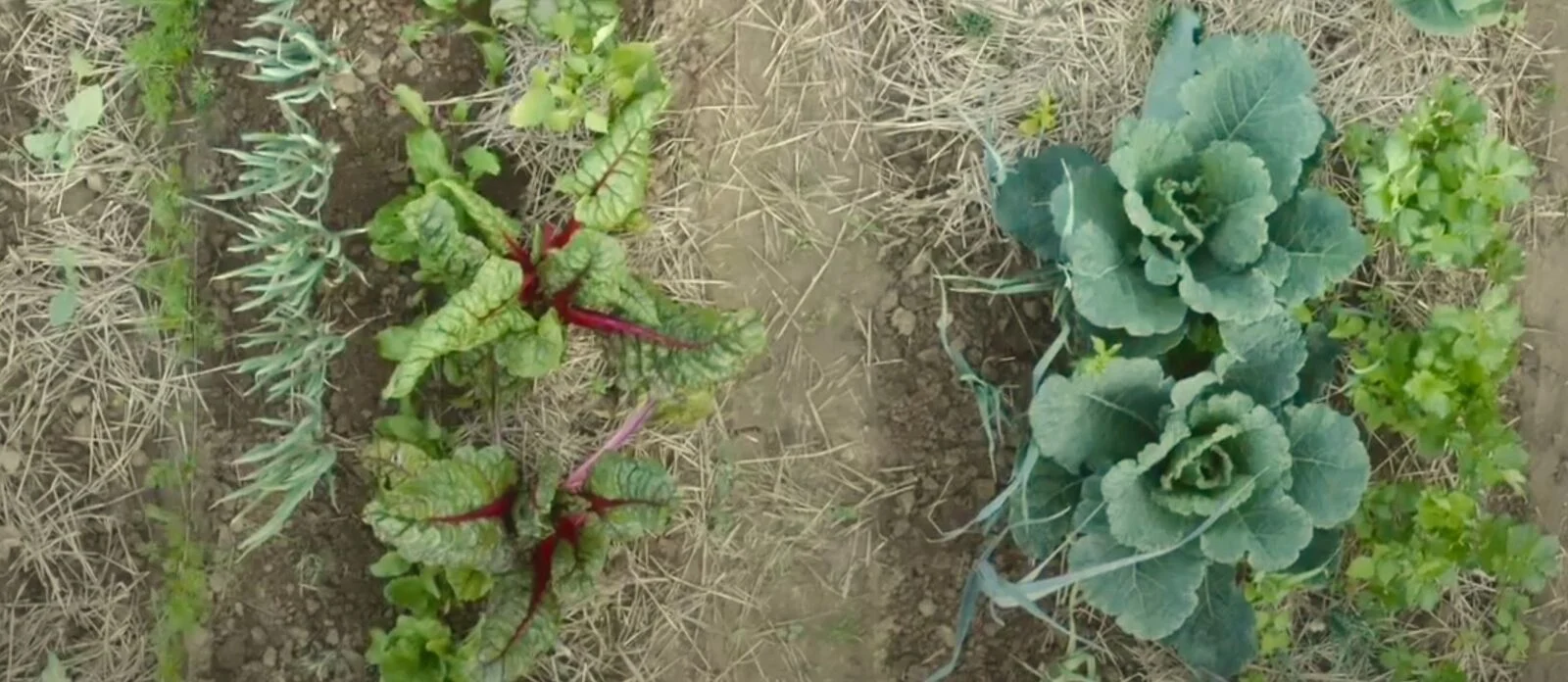
Plant Radishes & Daikon Next to Chard
- Pest control: Daikon and radishes can act as natural pest controllers by attracting pests that would otherwise attack chard. They can act as bait plants and divert pests away from chard.
- Different growing seasons: Daikon and radishes have shorter growing seasons compared to chard. They can be grown between the chard plants to make optimum use of the available space. As they mature and are harvested more quickly, there is room for chard to spread further.
- Soil structure: Daikon and radishes have tap roots that loosen and aerate the soil. These root systems root through the soil and thus ensure better drainage and oxygen supply, which benefits the chard.
Carrots as Good Companion Plant
- Carrots and chard have different nutrient requirements, which means that they compete less for nutrients. While chard has a higher need for nitrogen, carrots need more potassium and phosphorus.
- Swiss chard has broad leaves that grow upwards, while carrots have rather narrow leaves and focus more on root growth. This gives both plants enough light, air and space.
- Swiss chard and carrots attract different pests, so combining these two plants can help to naturally regulate pest populations.
- Swiss chard has a strong root system that loosens and aerates the soil, while carrots form deeper tap roots that break up the soil further.
Garlic Against Mildew
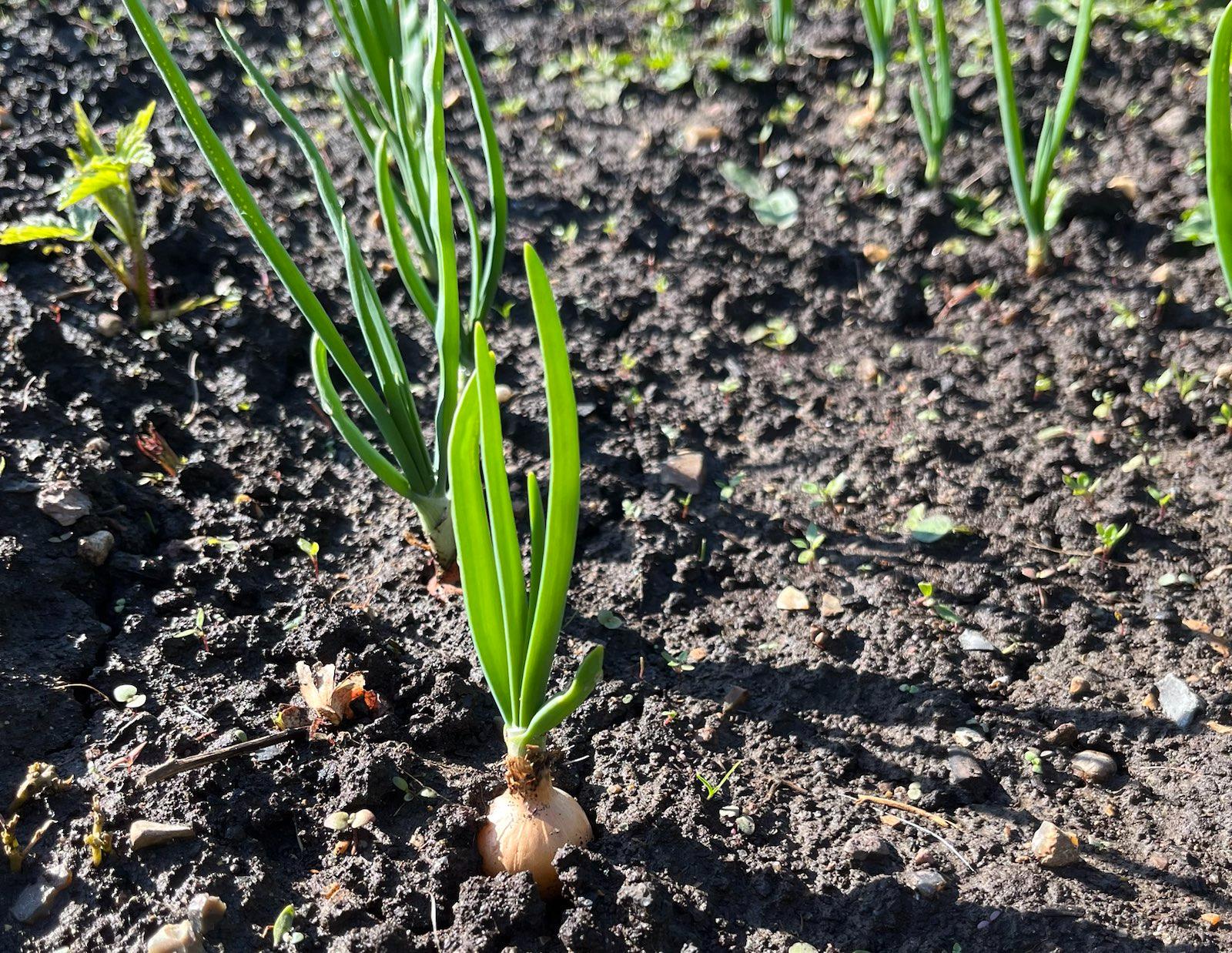
Garlic is a useful companion for chard as it prevents mildew. The essential oils in garlic act as a fungicide and can thus reduce fungal infestation. Some plants, such as garlic or onions, emit strong odors that can deter pests and pathogens. Planting chard near such plants can help to reduce the likelihood of disease and pest infestation. In addition to planting with garlic, sufficient planting distance between your chard plants also protects against mildew infestation.
Growing Beans & Peas Together With Chard
Beans and peas are legumes and have the ability to fix atmospheric nitrogen and release it into the soil. This additional nitrogen benefits chard as it is a nitrogen-loving leafy vegetable. This contributes to healthy growth and a better harvest.
In addition, beans and peas grow upwards and require climbing aids, while chard tends to spread out. These different growth patterns enable optimal use of the available space in the bed and ensure that all plants receive sufficient light and space.
Planting Chard & Lettuce Next to Each Other
By planting these species next to each other, you can make efficient use of the available space in the bed and give both plants enough room to grow. Swiss chard tends to grow in width, while lettuce has a more compact growth habit.
Lettuce also has a shorter growing season than chard, so you can harvest lettuce while chard is still growing. This staggered harvest allows you to continuously harvest fresh vegetables from your garden and make optimum use of the space in the bed.
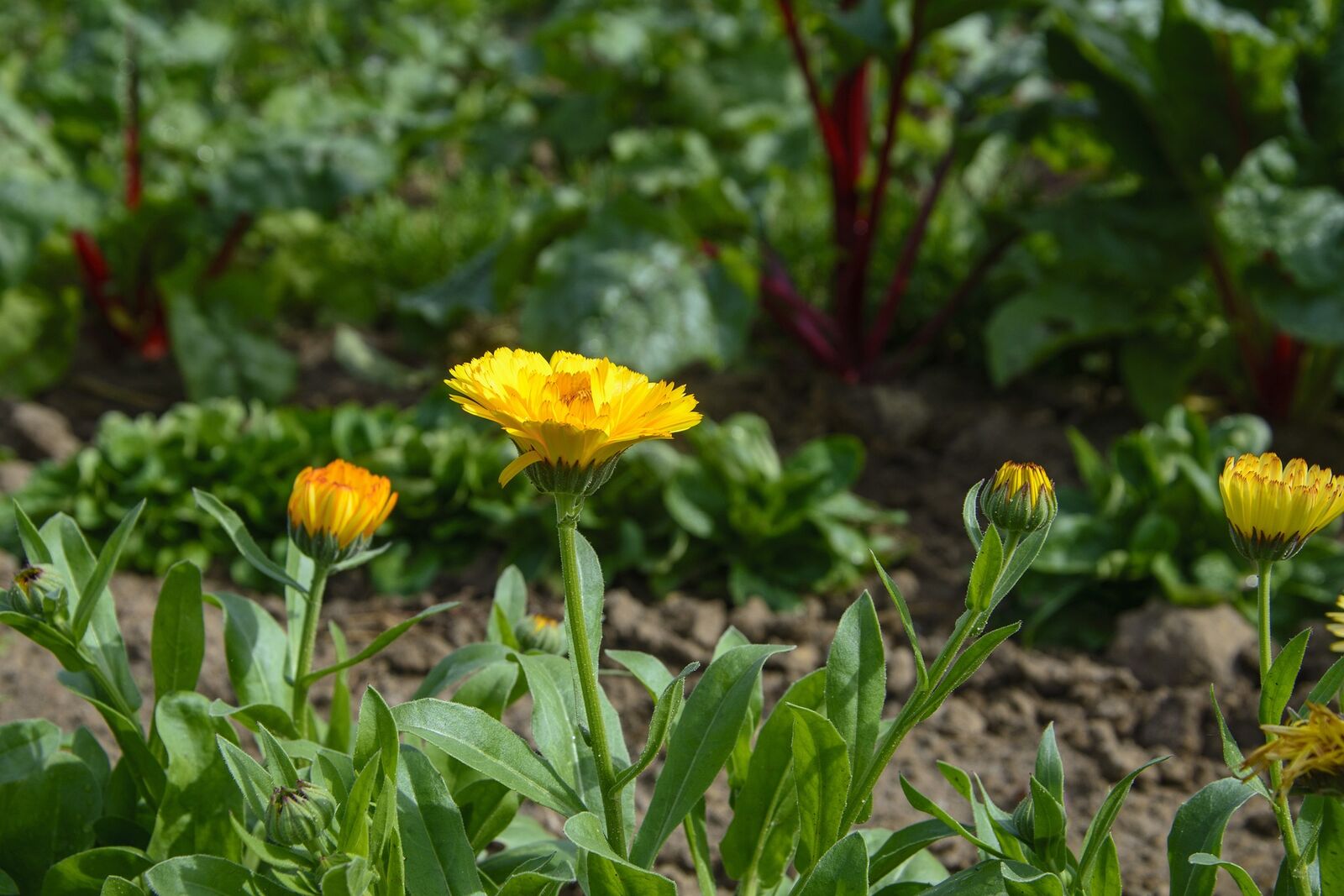
What Not to Plant Next to Chard?
Although chard generally does well with many plants in a mixed crop, there are some plants that are considered antagonistic for chard. This is because they may attract similar pests and diseases, compete for the same nutrients or otherwise negatively affect the growth and health of chard. This often occurs with plants from the same family (spinach, beet and sugar beet) or plants that compete for the same nutrients. This can impair the growth of both plant species and lead to deficiency symptoms.
Grow Spinach & Chard Together?
Spinach and chard should not be grown together as they belong to the same plant family (amaranth family) and attract similar pests and diseases. This increases the risk of disease and pest infestation.
Beet as an Companion Plant for Chard?
Beet also belongs to the amaranth family (Amaranthaceae) and attracts similar pests and diseases. To reduce the risk of disease and pest infestation, they should be grown separately.
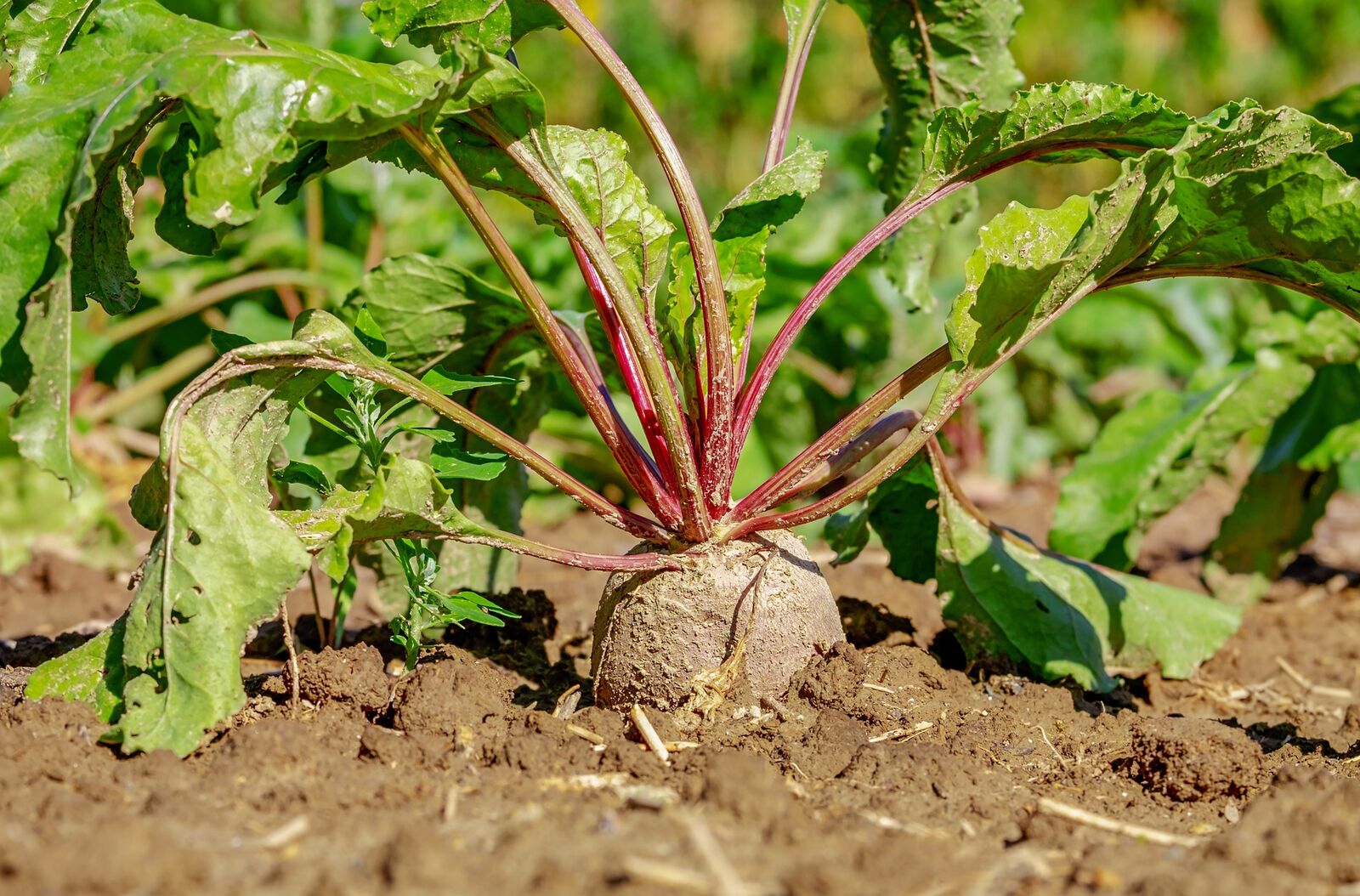
Succession Cropping & Crop Rotation
Succession cropping and crop rotation help to prevent pests and diseases from settling in your beds. This promotes the sustainable and healthy growth of your plants. The idea is that you:
- Do not grow plants of the same family in succession in the same place
- Do not grow plants with the same nutritional requirements one after the other
This contributes to good soil fertility, soil structure and higher yields.
Succession Cropping
You can grow lettuce and radishes as pre-crops for chard, as they are fast-growing crops and can be sown well in spring. Plants such as lamb's lettuce, cabbage, leeks and winter onions, which benefit from the remaining nutrients in the soil and can also be planted in the bed in winter, are suitable for growing after chard. You can find information on growing chard in our article Planting, Harvesting & Preparing Chard.
Crop Rotation
Be careful not to grow chard on the same bed where plants from the same family, such as spinach or beet, were grown in previous years. Grow chard in a three- or four-year cycle to minimize the risk of pest and disease problems.
Mixed Culture Table for Chard
A mixed cultivation table can help you find suitable companions for chard and combat pests and diseases in a natural way:
| Good Companion Plants | Bad Companion Plants |
|---|---|
| artichokes | cucumbers |
| beans & Peas | potatoes |
| fennel | lovage |
| nasturtium | beetroot |
| garlic | rocket |
| cabbages (broccoli, kohlrabi, etc.) | spinach |
| carrots | tomatoes |
| oregano | jerusalem artichoke |
| parsnips | black salsify |
| radishes | |
| radish | |
| marigold, tagetes | |
| lettuce | |
| sunflower | |
| onions |
Companion Planting Plan For the Garden & Raised Bed
To grow chard successfully in the garden or raised bed, it is important to follow a suitable crop rotation. Swiss chard can be sown from March to September and harvested from May to November. Make sure to vary the crop companions each year . Plant companion plants such as beans, cabbage or carrots next to chard and keep sufficient distance from antagonistic plants such as spinach and beet.
In this Chard Bed, you will find beans, savory, broccoli, garlic, carrots, oregano, marigolds and onions alongside chard. There are also radishes, lettuce and winter cabbage in the bed for pre- and post-crops. General planting plans for chard, in addition to the one listed here, can be found in this section. In the article on Marlene's chard bed you will find another example of a Planting Plan With Chard.
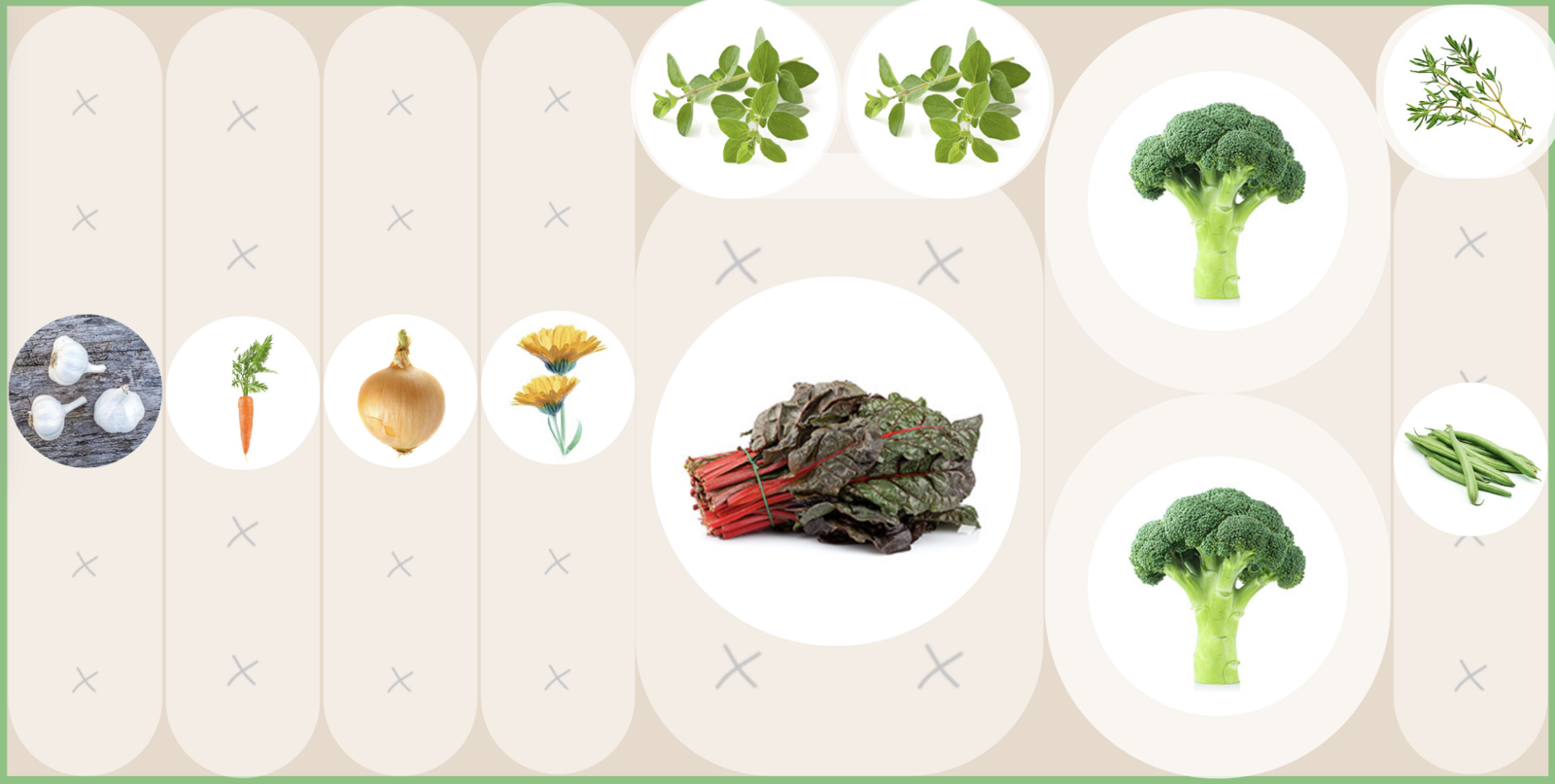

Bed Plans for Companion Planting With Chard
Swiss chard is a versatile vegetable that goes very well with many other vegetables such as cabbage, onions, carrots, lettuce and more. It is quite disease-resistant and complements root vegetables in its growth and cabbage species well due to its low nutrient requirements. You can find more example plans for companion planting with chard here.
If you have any questions or comments, please write to us at [email protected]. Would you like to receive helpful gardening tips all year round and plan your own beds optimally? Then register here or download the Fryd app for Android or iOS.
Fryd - your digital bed planner

Marielena
Marielena studies agricultural and environmental sciences. She gardens at home and at an allotment and likes to try out new things.
Learn MoreCurrent Topics in the Community

We had an olive tree ... when it didn't survive a harsh winter, my husband and our children turned it into this sculpture - a real #heart element in our garden. We planted a rambler rose on the second olive tree, which enchants us every year with its white flowers. It looks as if it were a flowering rose bush ....

Liked 5 times
May I introduce: my roommates Max (left) and Moritz. Max is a "sweet starter", which I used for the panettone and I can say it's much better than the store-bought one! The baguette (ok I still have to work on the perfect shape 🤣) with yeast only. The Moritz is a rye sourdough and is used for Vintschgauer.

Hello lovelies I am new to gardening What recommendations do you have for buying seeds? Or which stores can you recommend? I'm planning to start with the classics Onions, potatoes, garlic, carrots, herbs, lettuce, tomatoes, peas, beet and pumpkin
Show 3 answersPopular Articles

Overwintering Parsley: How to Do It Successfully

How to Grow Lettuce in Winter: Varieties, Sowing, Harvesting

Growing Sage Plant: Tips for Sowing and Harvesting

What Herbs Can Be Planted Together?

Create & Design a Permaculture Garden

Overwintering Plants: Tubs, Pots and Raised Beds

Pruning, Fertilizing & Propagating Currants: Care Tips

Pruning Raspberries: How to Do It

Vegetable Garden With Greenhouse: How to Use Greenhouse Effect

Winterizing Beds and the Garden: How to Do It
FAQ
What do you plant next to chard?
Good neighbors for chard include carrots, onions, peas, beans, lettuce and cabbage. These plants can have beneficial interactions, such as pest control or improved nutrient uptake.
What is not compatible with chard?
Spinach and beet should not be planted next to chard as they can attract similar pests and diseases. Potatoes should also not be planted directly next to chard, as they compete for the same soil nutrients.
Are zucchini and chard good companions?
Yes, zucchini and chard can be good neighbors. Both plants have different growth requirements and attract different pests, which means they don't affect each other.
Can you plant chard next to tomatoes?
Swiss chard and tomatoes are not normally grown next to each other. However, as both plants attract different pests, you can grow them next to each other if you pay attention to their needs and give them enough space to grow.
Can you plant chard and beet together?
You should not plant chard and beet right next to each other, as they belong to the same plant family (Chenopodiaceae). They can therefore attract similar pests and diseases.